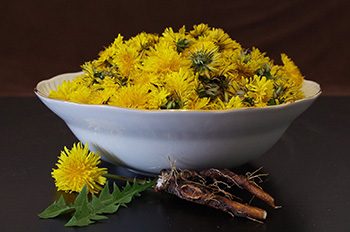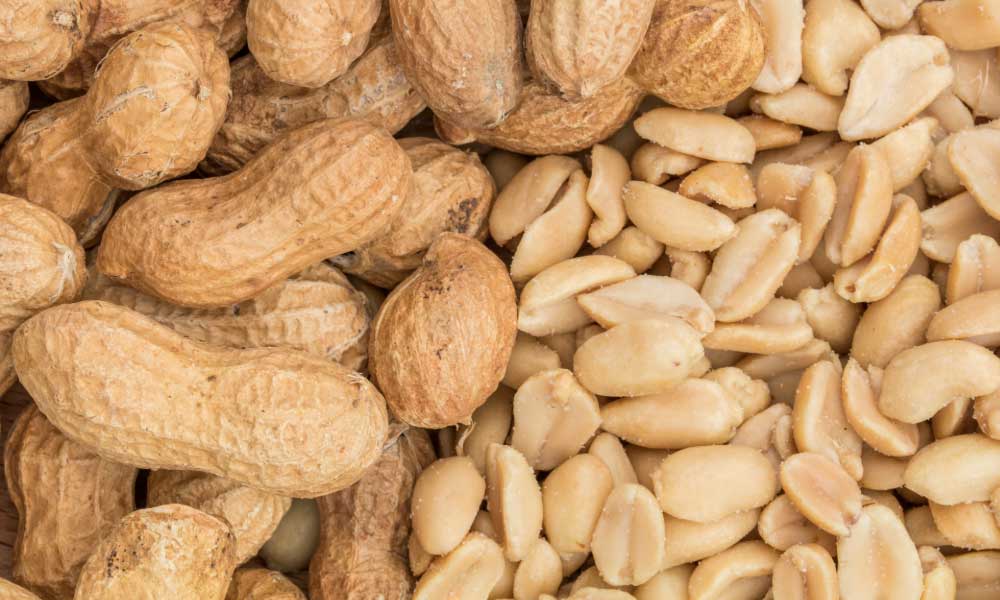
Dandelion Description & Health Benefits
- Dandelion is a member of the Asteraceae(Compositae) family which also includes sunflower, various lettuce varieties, Jerusalem artichoke, artichoke and many herbs and flowers.
- Dandelion greens are an excellent source of vitamins A, C, and K and a good source of calcium, riboflavin, iron, manganese and fiber.
- Vitamin A assists with normal formation and maintenance of the heart, lungs, kidneys as well as other organs and is involved in immune function, vision and reproduction.
- Vitamin C aids in the absorption of iron and repairs and maintains bones, teeth and cartilage; Vitamin C is involved in wound healing; Vitamin K is required for building bone and blood clotting; Calcium helps to maintain bones and teeth. It also assists nerves by carrying messages between the brain and body.
- Riboflavin is vital for growth and red blood cell formation; Iron is required for growth and development and is also needed to make hormones and connective tissue; Manganese helps the body form connective tissue, bones and plays a role in fat and carbohydrate metabolism a well as calcium absorption; Fiber prevents constipation and helps the digestive system to run smoothly.
- Dandelion has a history of use in herbal medicine treating digestive disorders. Research is limited for use of dandelion and digestive disorders.
- Dandelion may increase insulin secretion. If you are taking diabetic drugs, monitor your blood glucose levels closely.
- Dandelion may interact with some medications. Ask your pharmacist or doctor if dandelion is safe for use with your prescription medications.
Purchasing, Selecting, Storing, and Preparing
- The entire dandelion plant; roots, leaves and flowers are edible.
- Purchase dandelion leaves that are flat and crisp with a vibrant green color. Avoid leaves that are wilted, yellow or browning and those that are slimy. You can also harvest dandelion greens yourself.
- Avoid harvesting in areas were animals frequent or areas which are sprayed with pesticides.
- They are best picked in the spring and tend to get bitter as the summer goes on.
- Store the dandelion greens unwashed in a plastic bag and place in the crisper drawer in the refrigerator for two to five days.
- Prepare by rinsing or soaking leaves in cold water to ensure any dirt is removed.
- The leaves tend to have a bitter taste like many other dark leafy greens. Prepare by steaming or boiling prior to sautéing to decrease bitterness.
- Dandelion greens go well with a variety of ingredients. Try garlic, onions, lemon juice, vinegars and soy sauce (perhaps not all together!) to enhance and tame its bitter flavor.
Nutrition Facts
1 cup greens, raw
Calories: 25 | Protein: 1.49 g | Fat: 0.39 g | Carbohydrate: 5.06 g | Fiber: 1.9 g | Calcium: 103 mg | Magnesium: 20 mg | Potassium: 218 mg | Vitamin C: 19.2 mg | Folate: 15 μg | Vitamin A: 5589 IU
1 cup greens, cooked
Calories: 35 | Protein: 2.10 g | Fat: 0.63 g | Carbohydrate: 6.72 g | Fiber: 3.0 g | Calcium: 147 mg | Magnesium: 25 mg | Potassium: 244 mg | Vitamin C: 18.9 mg | Folate: 14 μg | Vitamin A: 7179 IU
ndb.nal.usda.gov
Request an Appointment

